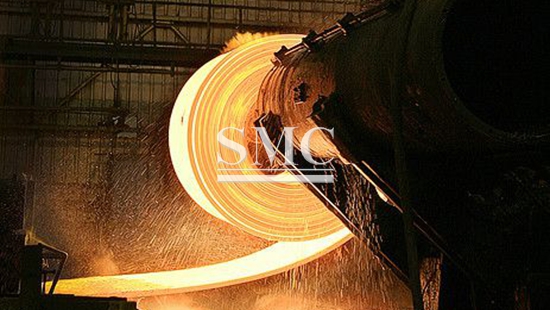Notice: Undefined index: sith_hide_share in /www/sites/alloy.wiki/index/wp-content/themes/likegoogle/single.php on line 32
Deprecated: get_settings is deprecated since version 2.1.0! Use get_option() instead. in /www/sites/alloy.wiki/index/wp-includes/functions.php on line 4862

Since the Industrial Revolution in the 19th century, Steel has played a primary role in economic development. The metal is still widely used today for many purposes thanks to its characteristics. Steel is actually not a pure metal, but an alloy of iron and variable percentages of carbon. Different contents of carbon divide the metal into ‘grades’. These, in turn, have specific features and are suitable for different purposes. Depending on its composition, steel can be categorised into: carbon steel, alloy steel, stainless steel and tool steel.
Yet, steel is highly affected by corrosion and requires protection. A common practice is that called Galvanisation, which consists in adding a coat of zinc on the metal to cover sides and edges of the steel shape. Hot-dip galvanisation is the most used system where steel is immersed into melted zinc and then let dry. The zinc layer is also called ‘sacrificial’ as it defends the metal substrate by rusting before the inner steel is reached. Usually, the thickness of the coating determines the item’s lifespan.
Beyond being protected, the metal has to be shaped in order to be used. Perhaps, the two most common practices are Hot and Cold Rolling. Generally, the Rolling technique is the process of reducing the thickness or changing the cross-sectional area of a work piece by compressive forces.
The Hot Rolling process consists in pressing heated steel billets among rolls, which squeeze it until the desired shape is reached. The number and layout of the pressing rolls depends on the shape that has to be imprinted. The product is then cooled down. Hot rolled steel is relatively cheap, easy and fast to produce. However, the shaped metal decreases in size when cooling, thus causing measurements imperfections. Besides, the rough finish may not be aesthetically pleasant and paint is hard to apply on it.
Instead, Cold Rolling presses steel at room temperature, avoiding the problem of downsizing. This phase is actually a further processing of hot-rolling. Because cold steel is less ductile, cold rolling requires several pressing phases. An incredible amount of stress has to be employed for shaping the metal. Precisely, as much stress needed until steel reaches its point of plastic deformation. There, the metal ends up being stronger than hot rolled alternatives. Yet, cold rolled steel may not allow for the same range of shapes that hot rolled steel offers. Advantages of cold steel are its dimension accuracy and its smooth finish, although it is twice more expensive than hot rolled steel.
Since its establishment in 1980, Shanghai Metal Corporation has specialised in both hot and cold rolled steel products. With over 35 years of experience, we can proudly supply you with items such as Hot Rolled Steel Coil/Sheet/Strip, Steel Chequered Plate – Diamond Plate and Copolymer Coated Steel Tape. For further information and a full list of products, please click here.
Shanghai Metal Corporation is a trusted aluminum alloy, aluminum foil price, stainless steel price and stainless steel manufacturer, kinds of stainless steel in china.
Guest contributors are welcome at the Alloy Wiki.It is a weekly wiki and guide on alloy information and processing technology, while also about the vast array of opportunities that are present in manufacturing. Our team of writers consists of a Machining Material Supplier / Machinist / Tool and Die Maker, a Biomedical Engineer / Product Development Engineer, a Job Development Coordinator / Adjunct Professor, and a President and CEO of a manufacturing facility.
Link to this article:Basics about Steel
Reprint Statement: If there are no special instructions, all articles on this site are original. Please indicate the source for reprinting:Alloy Wiki,thanks!^^


